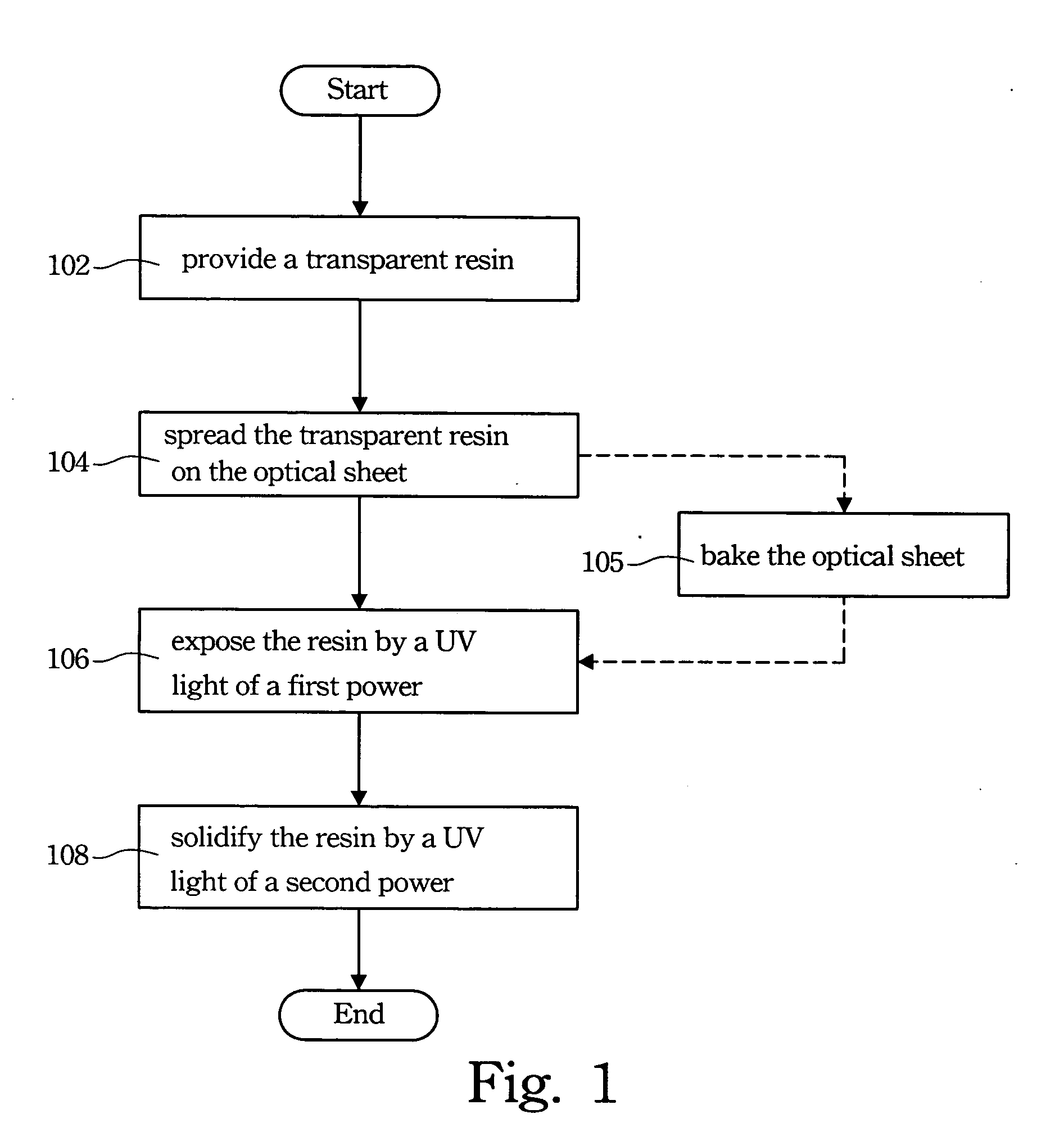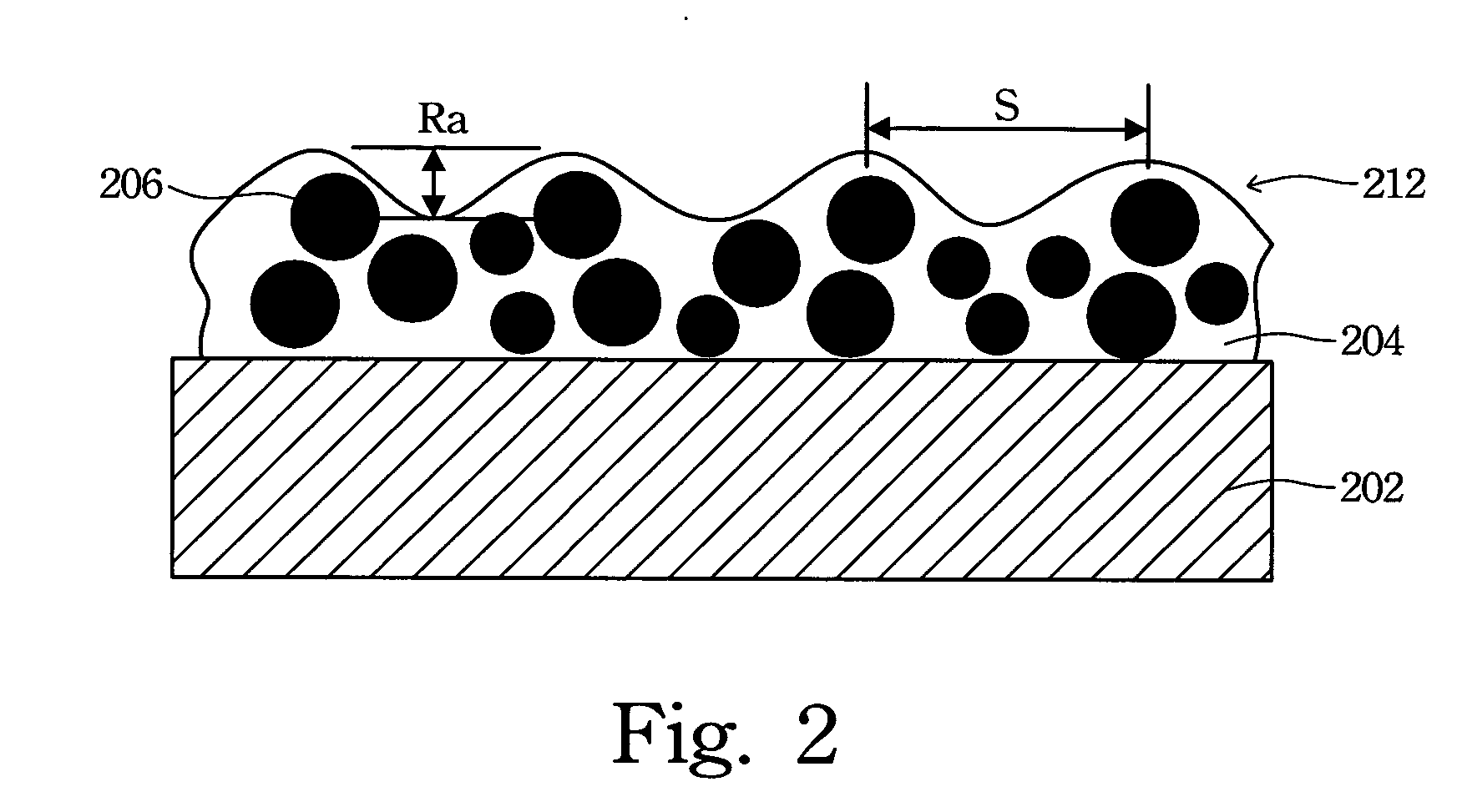Method for manufacturing a surface optical layer
a surface optical layer and manufacturing method technology, applied in the direction of diffusing elements, instruments, synthetic resin layered products, etc., can solve the problems of user discomfort and difficulty in viewing the display, waste of manufacturing funds, consumption of research and development efforts, etc., and achieve the effect of increasing the visibility of the display
- Summary
- Abstract
- Description
- Claims
- Application Information
AI Technical Summary
Benefits of technology
Problems solved by technology
Method used
Image
Examples
Embodiment Construction
[0017] Reference will now be made in detail to the present preferred embodiments of the invention, examples of which are illustrated in the accompanying drawings. Wherever possible, the same reference numbers are used in the drawings and the description to refer to the same or like parts.
[0018] The invention spreads a transparent resin having a plurality of transparent particles on an optical sheet, and exposes and solidifies the transparent resin by UV light of at least two different powers. When the transparent resin is exposed to UV light of a lower power, the transparent resin is not totally solidified. This step is critical to change the optical properties of the surface optical layer, in which when the exposing time of UV light of the lower power is longer, the resultant haze of the surface optical layer is higher while the transparency of the surface optical layer is kept intact.
[0019] Referring to FIG. 1, a flow chart of one preferred embodiment of the invention is illustr...
PUM
| Property | Measurement | Unit |
|---|---|---|
| wavelength | aaaaa | aaaaa |
| transparent | aaaaa | aaaaa |
| powers | aaaaa | aaaaa |
Abstract
Description
Claims
Application Information
 Login to View More
Login to View More - R&D
- Intellectual Property
- Life Sciences
- Materials
- Tech Scout
- Unparalleled Data Quality
- Higher Quality Content
- 60% Fewer Hallucinations
Browse by: Latest US Patents, China's latest patents, Technical Efficacy Thesaurus, Application Domain, Technology Topic, Popular Technical Reports.
© 2025 PatSnap. All rights reserved.Legal|Privacy policy|Modern Slavery Act Transparency Statement|Sitemap|About US| Contact US: help@patsnap.com



